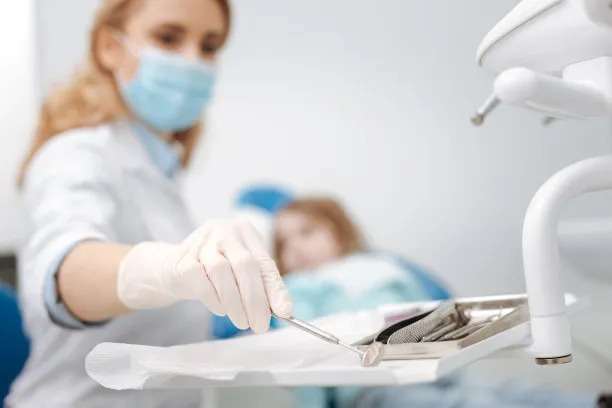The Essential Guide to Extract a Tooth Safely and Comfortably for a Healthier Smile
Summary: Extracting a tooth can be a daunting experience, but it doesnt have to be. This essential guide focuses on the key aspects of tooth extraction, ensuring the process is safe and comfortable for patients. By understanding what to expect before, during, and after the procedure, individuals can mitigate their anxiety and promote a healthier smile. We will explore the importance of proper preparation, the types of anesthesia used, aftercare considerations, and tips for choosing a qualified dentist or oral surgeon. Each section is designed to provide a comprehensive understanding of tooth extraction, helping readers to navigate this common dental procedure with ease.
1. Importance of Proper Preparation

Before undergoing a tooth extraction, proper preparation is crucial. Patients should schedule a consultation with their dentist, who will evaluate the tooth condition and determine if extraction is necessary. During this appointment, discussions about medical history and current medications will take place to identify any potential risks.
Creating a list of questions for the dentist can ensure all concerns are addressed. Understanding the reasons for extraction and potential alternatives can provide clarity and comfort. Additionally, patients should inform their dentists about any anxieties regarding the procedure, as this information allows for tailored approaches to manage them efficiently.
Patients may also need to prepare logistically for the day of the extraction. Arranging for someone to drive them home afterward is essential, particularly if sedation anesthesia is used. Moreover, following the dentists guidelines, such as fasting before the procedure if advised, contributes to the extractions success.
2. Understanding Anesthesia Options
The type of anesthesia used during a tooth extraction plays a significant role in patient comfort. Dentists typically offer local anesthesia, sedation anesthesia, or general anesthesia, depending on the complexity of the extraction and the patients level of anxiety.
Local anesthesia numbs the specific area where the tooth is located, allowing patients to remain conscious but pain-free during the procedure. This option is often preferred for simple extractions.
On the other hand, sedation anesthesia helps to relax the patient and reduce anxiety, often leading to a semi-conscious state. It is particularly beneficial for patients with severe dental phobias or those undergoing more complicated extractions. General anesthesia, which renders the patient completely unconscious, is usually reserved for invasive procedures or for patients requiring a higher level of comfort.
3. Aftercare Considerations for Recovery
Proper aftercare is vital for a smooth recovery following a tooth extraction. Patients should take the dentists postoperative instructions seriously to avoid complications. This includes managing pain properly, as prescribed medications or over-the-counter pain relievers can help control discomfort.
Following the extraction, patients should adhere to a soft food diet for several days. Foods like yogurt, applesauce, and mashed potatoes help prevent irritation to the extraction site. Additionally, drinking plenty of fluids while avoiding straws is essential, as sucking can dislodge the blood clot and lead to dry socket.
Monitoring the extraction site for any signs of infection or complications is also important. Redness, swelling, or prolonged pain should prompt a call to the dentist. By being attentive to these factors, patients can facilitate faster healing and ensure a healthier smile.
4. Choosing a Qualified Dentist or Surgeon
Selecting the right dentist or oral surgeon can significantly impact the tooth extraction experience. Researching professionals in your area, reading reviews, and seeking recommendations from family or friends are excellent starting points.
Scheduling consultations with potential dentists allows patients to gauge their comfort level with the professional. During these meetings, individuals should not hesitate to ask about the dentists experience with extractions, potential complications, and their approach to patient comfort.
Additionally, ensuring that the dental practice adheres to safety standards and uses modern equipment is crucial. A clean, well-equipped facility reflects a commitment to patient safety and comfort, which can ease anxiety and promote overall satisfaction with the procedure.
Summary:
In conclusion, understanding the essential aspects of tooth extraction is vital for patients seeking to maintain their oral health. By preparing adequately, knowing anesthesia options, following aftercare guidelines, and selecting a qualified dental professional, patients can approach this common procedure with confidence and ease. A positive experience will lead to a healthier smile and encourage individuals to pursue necessary dental care without fear.
This article is compiled by Vickong Dental and the content is for reference only.


